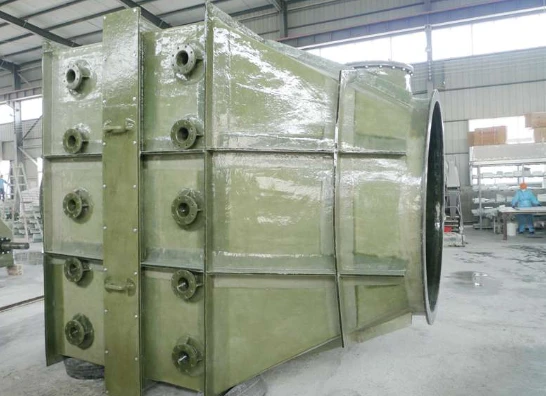
-
 Afrikaans
Afrikaans -
 Albanian
Albanian -
 Amharic
Amharic -
 Arabic
Arabic -
 Armenian
Armenian -
 Azerbaijani
Azerbaijani -
 Basque
Basque -
 Belarusian
Belarusian -
 Bengali
Bengali -
 Bosnian
Bosnian -
 Bulgarian
Bulgarian -
 Catalan
Catalan -
 Cebuano
Cebuano -
 China
China -
 China (Taiwan)
China (Taiwan) -
 Corsican
Corsican -
 Croatian
Croatian -
 Czech
Czech -
 Danish
Danish -
 Dutch
Dutch -
 English
English -
 Esperanto
Esperanto -
 Estonian
Estonian -
 Finnish
Finnish -
 French
French -
 Frisian
Frisian -
 Galician
Galician -
 Georgian
Georgian -
 German
German -
 Greek
Greek -
 Gujarati
Gujarati -
 Haitian Creole
Haitian Creole -
 hausa
hausa -
 hawaiian
hawaiian -
 Hebrew
Hebrew -
 Hindi
Hindi -
 Miao
Miao -
 Hungarian
Hungarian -
 Icelandic
Icelandic -
 igbo
igbo -
 Indonesian
Indonesian -
 irish
irish -
 Italian
Italian -
 Japanese
Japanese -
 Javanese
Javanese -
 Kannada
Kannada -
 kazakh
kazakh -
 Khmer
Khmer -
 Rwandese
Rwandese -
 Korean
Korean -
 Kurdish
Kurdish -
 Kyrgyz
Kyrgyz -
 Lao
Lao -
 Latin
Latin -
 Latvian
Latvian -
 Lithuanian
Lithuanian -
 Luxembourgish
Luxembourgish -
 Macedonian
Macedonian -
 Malgashi
Malgashi -
 Malay
Malay -
 Malayalam
Malayalam -
 Maltese
Maltese -
 Maori
Maori -
 Marathi
Marathi -
 Mongolian
Mongolian -
 Myanmar
Myanmar -
 Nepali
Nepali -
 Norwegian
Norwegian -
 Norwegian
Norwegian -
 Occitan
Occitan -
 Pashto
Pashto -
 Persian
Persian -
 Polish
Polish -
 Portuguese
Portuguese -
 Punjabi
Punjabi -
 Romanian
Romanian -
 Russian
Russian -
 Samoan
Samoan -
 Scottish Gaelic
Scottish Gaelic -
 Serbian
Serbian -
 Sesotho
Sesotho -
 Shona
Shona -
 Sindhi
Sindhi -
 Sinhala
Sinhala -
 Slovak
Slovak -
 Slovenian
Slovenian -
 Somali
Somali -
 Spanish
Spanish -
 Sundanese
Sundanese -
 Swahili
Swahili -
 Swedish
Swedish -
 Tagalog
Tagalog -
 Tajik
Tajik -
 Tamil
Tamil -
 Tatar
Tatar -
 Telugu
Telugu -
 Thai
Thai -
 Turkish
Turkish -
 Turkmen
Turkmen -
 Ukrainian
Ukrainian -
 Urdu
Urdu -
 Uighur
Uighur -
 Uzbek
Uzbek -
 Vietnamese
Vietnamese -
 Welsh
Welsh -
 Bantu
Bantu -
 Yiddish
Yiddish -
 Yoruba
Yoruba -
 Zulu
Zulu
exploring efficient methods for streamlining frp laundering
Exploring Efficient Methods for Streamlining FRP Laundering
In recent years, the increasing demand for high-quality fiber-reinforced polymers (FRPs) in various industries has prompted a closer look at the processes involved in their production and maintenance. One critical aspect of FRP handling that often goes overlooked is the laundering process. Effective laundering is essential for ensuring that FRP materials retain their properties and performance over time. This article will explore efficient methods for streamlining FRP laundering, focusing on innovation, sustainability, and cost-effectiveness.
Understanding FRP Laundering
FRP materials, known for their strength-to-weight ratio and corrosion resistance, are widely used in applications such as construction, automotive, and marine industries. However, over time, these materials can accumulate dirt, oils, and other contaminants that can affect their mechanical properties and aesthetic appeal. Hence, it is vital to implement a thorough laundering procedure that not only cleans the materials but also preserves their inherent properties.
Current Challenges in FRP Laundering
The traditional laundering methods for FRPs are often time-consuming and labor-intensive. Common challenges include the use of harsh chemicals that can degrade the FRP material and the waste generated during the cleaning process. Additionally, conventional laundering techniques may not effectively remove all contaminants, leading to a reduction in the lifespan of the FRP components.
Innovative Laundering Techniques
1. Biodegradable Surfactants The introduction of biodegradable surfactants presents a promising solution for FRP laundering. These environmentally friendly cleaning agents are effective at breaking down oils and dirt without damaging the fiber matrix. They ensure that FRPs maintain their structural integrity while promoting sustainable practices.
exploring efficient methods for streamlining frp laundering

2. Ultrasonic Cleaning Ultrasonic cleaning technology uses high-frequency sound waves to agitate a cleaning solution, creating microscopic bubbles that implode and provide a deep clean. This method has shown significant effectiveness in dislodging contaminants from intricate FRP structures, ensuring a thorough wash without the need for harsh chemicals.
3. Steam Cleaning Steam cleaning is another effective method that employs high-temperature steam to sanitize and clean FRP surfaces. The heat not only helps to loosen stubborn dirt but also kills bacteria and fungi, making it an excellent choice for maintaining FRP components in industries where hygiene is paramount.
4. Automated Cleaning Systems Embracing automation in the laundering process can significantly reduce labor costs and time. Automated cleaning systems equipped with sensors and robotic arms can handle FRP items efficiently, ensuring that every surface is cleaned uniformly. Such systems can be programmed to use the appropriate cleaning techniques depending on the type and degree of contamination.
Cost-Effectiveness and Sustainability
Streamlining the laundering process for FRPs also has significant implications for cost savings and sustainability. By reducing the amount of water and chemicals used in laundering, companies can lower their operational costs while minimizing their environmental footprint. Utilizing biodegradable cleaning agents and energy-efficient equipment can yield a dual benefit of cost savings and enhanced sustainability, aligning with global efforts to reduce industrial waste.
Conclusion
As industries continue to adopt FRP materials for their superior properties, the importance of looking after these materials through efficient laundering processes cannot be overstated. By exploring innovative techniques such as biodegradable surfactants, ultrasonic cleaning, steam cleaning, and automated systems, organizations can improve their laundering efficiency while maintaining the integrity of the FRP. The transition to more sustainable and cost-effective laundering practices is not only beneficial for the longevity of FRP materials but also contributes to a greener future for industries relying on these versatile composites. In conclusion, embracing efficiency in FRP laundering is a crucial step towards achieving modern standards of production, sustainability, and environmental responsibility.









